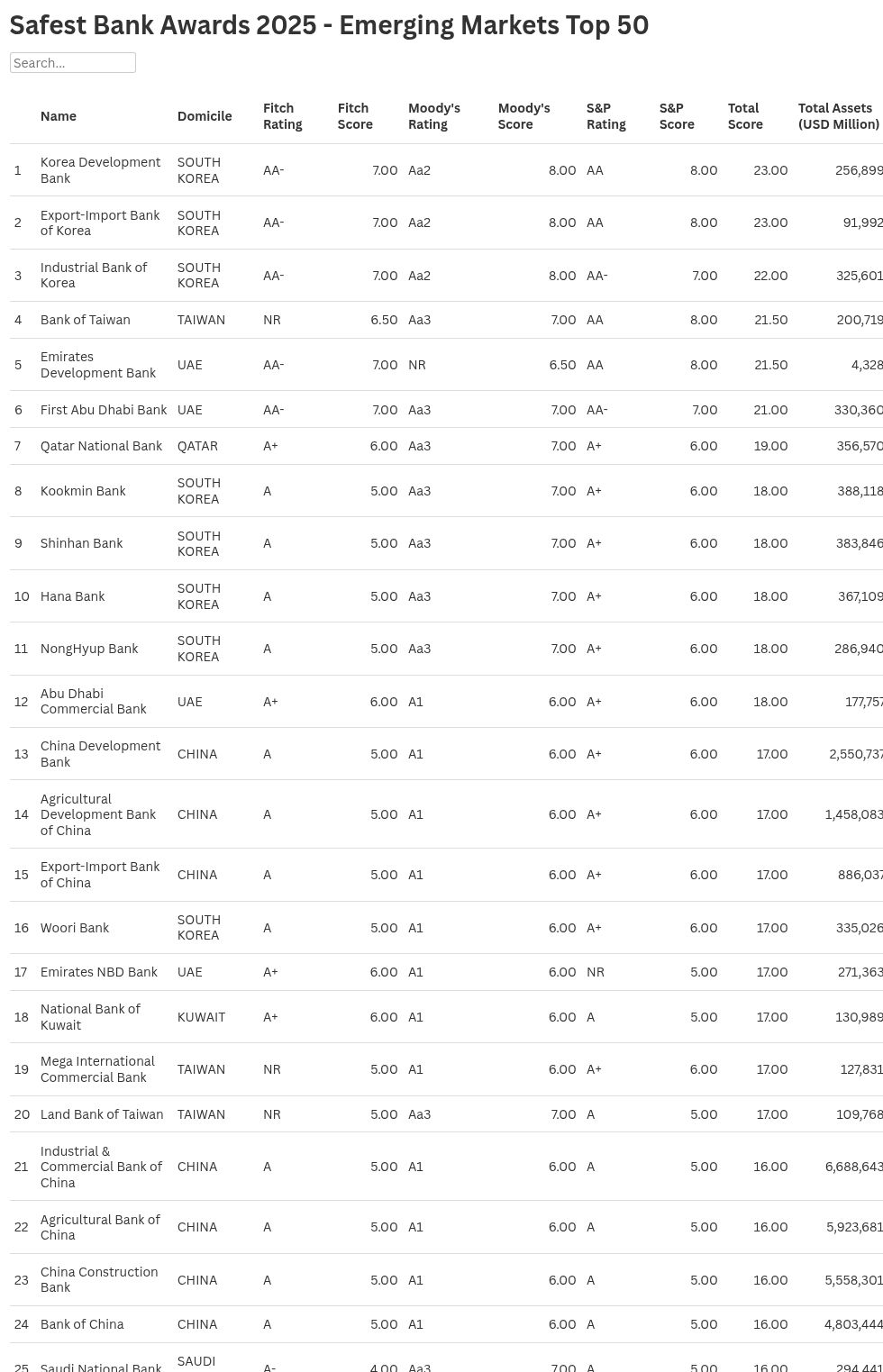Our rankings reveal the 50 biggest emerging market banks amid China’s slowdown and India’s rapid rise.
China is mired in an economic slump that is expected to further worsen in 2026. Concerns over the downturn prompted Fitch to downgrade the country’s sovereign rating, citing a “continued weakening of China’s public finances and a rapidly rising public debt trajectory during the country’s economic transition.” Additionally, the agency expects that “sustained fiscal stimulus will be deployed to support growth.” Stimulus contributes to asset growth in the country’s banking sector through the financing of large infrastructure projects and incremental loan growth.
But in a show of China’s continued dominance in our ranking of the 50 Biggest Emerging Market Banks in 2025, Chinese banks take the top 15 spots and account for half of all institutions in the ranking. However, despite its 4% aggregate growth, the country’s share of total banking assets in the top 50 has declined to about 84% from 90% last year as banks in the eight other countries in the rankings are expanding more rapidly.
Most notable are the five Indian banks, which averaged 14% year-over-year asset growth. Among emerging market countries, India’s economy is leading the pack, with GDP growth of 6.5% in 2024 and a forecast of 6.6% in 2025 and 6.2% in 2026. Recognizing India’s sustained progress, S&P upgraded its sovereign rating in August, stating that its “robust economic expansion is having a constructive effect on India’s credit metrics.” The agency expects “sound economic fundamentals to underpin growth momentum over the next two to three years.” Furthermore, the agency’s view is that “continued policy stability and high infrastructure investment will support India’s long-term growth prospects.”
If China’s banks are excluded, a clearer global view of the biggest emerging market banks materializes. India adds four more for a total of nine banks in the rankings, with State Bank of India moving to the top from 16th place here. Brazil’s Banco do Brasil would then take third place, with two South Korean banks rounding out the top 5. Other countries entering the rankings would be Egypt, Mexico, and Poland.


